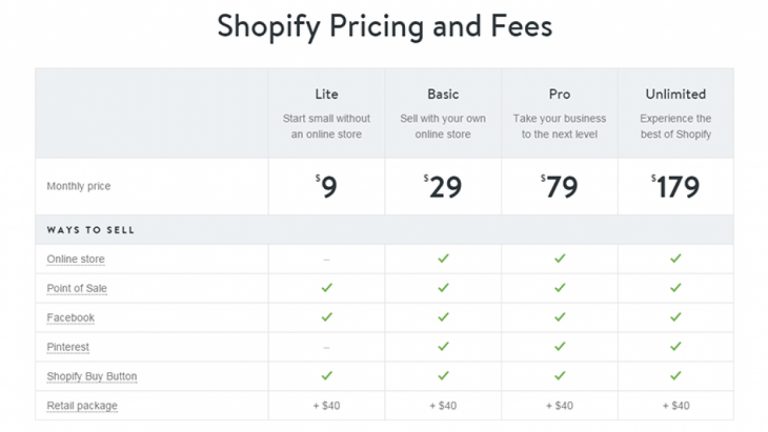Shopify or WooCommerce: What’s the Best E-Commerce Platform?
When starting an Online Business, Shopify and WooCommerce, are the two top eCommerce platforms that come to your mind. But which one is the best?
It’s been years since these two eCommerce platforms have appeared in the market but to choose between the two is still a tough choice as both have their pros and cons.
As the owner of the business, it is pivotal to choose the right eCommerce platform which fits your business needs and supports your business goals to become a successful leader in the market.
Before we dive deep into the detailed comparison between Shopify and WooCommerce, let’s take an overview of the basics like what is Shopify and what is WooCommerce?
What is Shopify?
Shopify is an eCommerce platform that allows any business to set up its online store and sell its products. The platform is wide enough to allow merchants to sell their products in person as well through “Shopify POS”. The company originated in the year 2010 and since then the company has become the leading eCommerce platform which is designed for businesses of all sizes and free from the barriers of technical aspects like website coding, security, etc.

What is WooCommerce?
WooCommerce is an open-source eCommerce plugin that turns any WordPress website into a dominant online store. This plugin has been designed keeping both small and large-sized online merchants using WordPress in mind. Launched a year later than Shopify, WooCommerce quickly became popular in the market for its simplicity to install & customize and free base product. With WooCommerce, one can create a truly spectacular and enormous online store but only if you know how to code.
Now as we are clear on the basics let’s take a look at every aspect of each platform to have a clear understanding of which platform to choose?
Different Aspects of eCommerce: Shopify Vs WooCommerce
1. Ease of Use

The biggest advantage of Shopify is how easy it is to use, especially for beginners trying to put together an online store for the first time as you are not required to install anything and it is a very quick starting process. As Shopify is a hosted eCommerce platform, most of the technical nuances of operating an online store have been taken care of for you. Whether it is your domain name or SSL certificates, Shopify is there to save your day.
The learning curve is quite steeper when WooCommerce is concerned as it is not a hosted platform like Shopify. This means that on WooCommerce you have to manage updates, backups, and make sure the website is secured. The level of comfort around web-related things is a must when using WooCommerce. Although there are some specialized WordPress hosting companies that take care of the domain hosting and security installation for you but compared to Shopify’s one-click “Sign up” button, it is still difficult to start from scratch with WooCommerce.
2. Build Time
Shopify is a provisioned platform loaded with features and tools which you require to build an online store across numerous channels. Shopify is miles ahead of competitor eCommerce platforms when it comes down to building an online store as it requires limited technical skills and has a quick setup process. Shopify also makes the build time even faster by offering a collection of about 100 pre-designed website themes, stretching across different and major business categories.
WooCommerce on the other hand comes as an open-source eCommerce plugin that transforms a WordPress website into a fully functioning online store. Although the setup process offered by WooCommerce is not that complex in all fairness it is not as spontaneous as Shopify. In WooCommerce, the user needs to go through multiple channels and systems before he/she can finally get their store up and running. The process starts with domain set up, then WordPress installation, followed by activation of WooCommerce plugin, and finally the customization of the store.
3. Design and Theme
Shopify’s theme store has over 100 themes, users have both paid and free options. The templates on Shopify are refined, aesthetic, and polished and users can use code to customize your Shopify themes if they wish to. As another plus point, Shopify also offers unique variations in its themes like changing colors, different fonts, etc. The only down point of Shopify’s design and theme collection is the price tags on the premium themes which can go as high as $180.
Unlike Shopify, WooCommerce has over 1,000 specific eCommerce themes for its users to peruse. The design of your store on WooCommerce depends upon how well you utilise your technical skills and how many hours you are willing to put in. Also, the point to note is that WooCommerce does not provide any specific design traits on its own so the composition of your webstore depends on your current and future WordPress theme. Although WooCommerce is compatible with most of the themes available in the market, if the design is really important to you, then search for themes that are particularly made for WooCommerce. The price tags start from as low as $39 and can go as high as $119 depending on your theme.

4. Pricing
When it comes to pricing Shopify has a set pricing or at least very clear and straightforward. The prices of Shopify range from $9 to $219 per month. The entire motive of Shopify is to provide people with the single but out-of-the-box solution with few pricing packages. As soon as you sign-up and pay for your desired package, your new slick eCommerce store is ready to get going.
On the other hand, WooCommerce has flexible pricing plans as it is an open-source plugin, it is free of cost, but additional costs that go along while making an online store gets included like hosting, a domain name, and security. However, each extension costs as low as $39 on average which makes it comparatively cheaper in comparison to Shopify. Moreover, in WooCommerce you can also find free alternatives to the paid extensions and can hold your costs low by purchasing the plugins and tools only when required.

5. Customer Support
As Shopify is a fully hosted platform, which means they have entire control over the software and know in and out of their platform. Shopify Provides extensive 24/7 support over the phone, email, and live chat, to its users. Moving on, expanded documentation, user guides, video tutorials, and forums, are also available at your service if you wish to resolve the issue on your own. Shopify also offers service to hire Shopify experts when required extra help. The only drawback is that Shopify does not provide support for any third-party apps or themes you are using.
WooCommerce being a popular eCommerce Platform provides several support options at your service when required. As it is a self-hosted platform, WooCommerce is liable to provide support for any kind of issues with your store. This includes a range of documentation, tutorials, videos, forums, and guides that allow users to help themselves. Since the platform is extremely popular, you can often find cheaper developers to help you fix your WooCommerce issues. The down point for WooCommerce is that the developers of the theme and extensions at your WooCommerce store are responsible to answer and resolve your issue, not the platform provider.
6. Payment Options
In an online store, you have many payment gateways that you can use to accept payments online. Some payment gateways may be suitable to you and some might not be available to your customer, so many factors are affecting your decision. Shopify has plenty of payment options that one can use to receive payments online. They also offer their own payment solutions known as “Shopify Payments” (powered by Stripe) as well as other popular third-party payment gateways. The only barrier that you can face is that Shopify charges an extra 2% charge on transactions made through third-party payment gateways. This can be reduced to 0.5% per transaction by subscribing to the $299 Advanced Shopify plan.
WooCommerce also supports all the popular third-party payment gateways along with PayPal and Stripe Payments. The best part of WooCommerce is that it even has support for the number of regional and less popular payment services. Further, as the platform is self-hosted, the transaction fee is only charged by your bank or payment gateway. A major plus point of WooCommerce is that they never charge a % fee on the store transactions which can save you a lot of money.

Conclusion
Shopify and WooCommerce both are powerful and completely separate eCommerce platforms and which platform is best, entirely depends upon which aspect you are looking for in your store. For instance, if you have experience with web designing and coding, then WooCommerce might be the right choice for you, if not, then yes, Shopify is a better choice than WooCommerce.
Every business owner is different and their different needs and specifications that they need in their website will determine the choice of the platform. Upon analyzing both platforms these are some key points that have been determined:
1. If you like flexibility in payment options or how much you want to pay each month, then WooCommerce is the best option for you. But if you’d like to know how much you’re going to pay for your website and pay a fixed amount each month, then Shopify is the best option for you.
2. If you want entire control of your webstore and things like hosting, security, customization, etc., WooCommerce might be the right choice for you.
3. If you don’t want to worry about any technical aspects of your webstore and just want to go straight away on selling products, Shopify is the best choice over WooCommerce.
4. If you’re looking for cheaper and customer-friendly payment gateways, then WooCommerce might be the right fit as they do not charge an excess fee over transactions, unlike Shopify.
5. When it comes to designing and themes for your webstore, both platforms are equally good enough for the users as it all depends upon your choice of template and likeness. For instance, WooCommerce has a wider range of options on plugins and themes, whereas Shopify offers elegant and aesthetic templates that are ready to use.
6. Finally, if you are looking for 24/7 support options for your webstore issues, then Shopify would be the perfect fit. Whereas if you are looking for cheaper options like a website developer or experts ready to resolve your issue at low prices, then go with WooCommerce.

